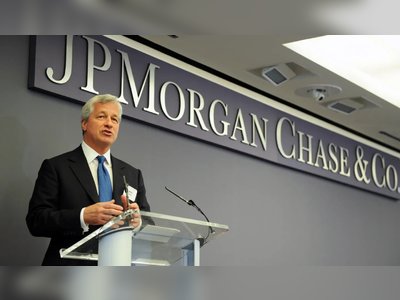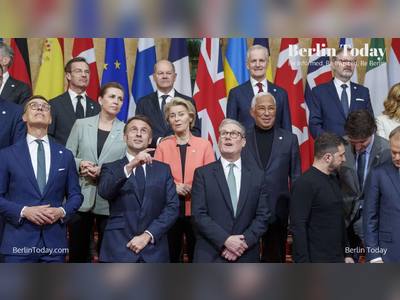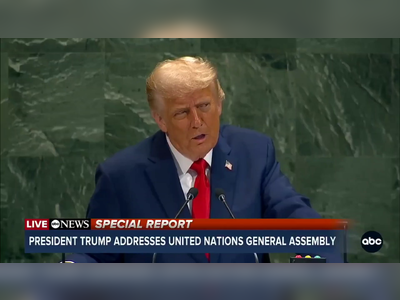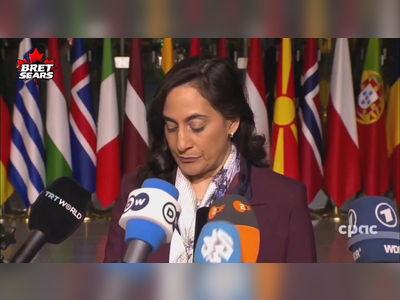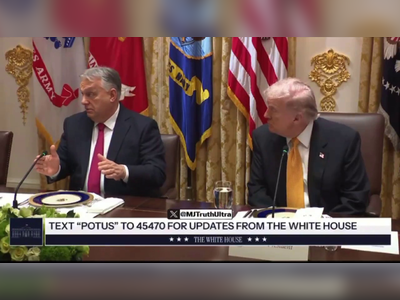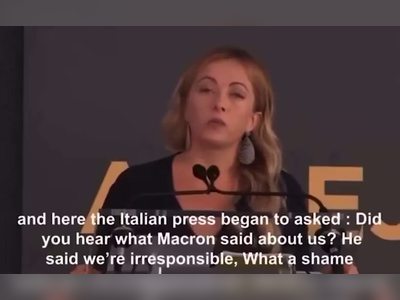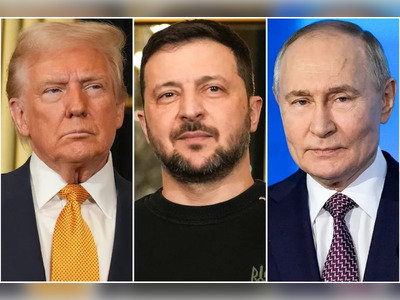US Administration Under President Donald Trump Reportedly Lifts Ban on Ukraine’s Use of Storm Shadow Missiles Against Russia
Report indicates Washington authorised Kyiv to strike deep into Russian territory, while President Trump labels the story "fake news"
In Washington, the administration of President Donald Trump has, according to multiple U.S. defence officials and a Wall Street Journal investigation, quietly removed a major restriction preventing the use by Ukraine of British-supplied Storm Shadow cruise missiles inside Russia.
The move reportedly follows the strike on a Russian explosives plant in Bryansk by Ukrainian forces using the Storm Shadow missile, which British defence officials and the Ukrainian military say followed U.S. approval.
This authorisation is understood to mark a significant shift in Western assistance to Kyiv in its war with Russia.
Sources familiar with the decision describe how control over authorisation of these missions was transferred from the U.S. Secretary of Defence to the commanding U.S. general in Europe, aligning missile-use authority more closely with frontline command rather than political oversight.
The shift came as frustration mounted in Kyiv over Moscow’s reluctance to negotiate, and as the Trump administration signalled willingness to widen Ukraine’s strike capacity.
In parallel, the United States prepared a fresh package of sanctions aimed at pressuring President Vladimir Putin’s government to come to the table.
Shortly after publication of the Wall Street Journal account — which was based on U.S. defence sources — President Trump issued a statement dismissing the report as "fake news" and maintaining that no such authorisation had been given.
The mixed messaging underscores the delicate nature of missile-use policy, which risks escalation, while also reflecting Trump’s effort to portray himself as a leader focused on ending the conflict rather than deepening it.
Military analysts say that the Storm Shadow missile, with a range of roughly 300 km and reliant on U.S. targeting data, gives Kyiv a credible strike option inside Russia.
Kyiv’s announcement that it used such a missile to hit a Russian explosives facility in Bryansk lent credence to the claim of changed rules.
Russian officials reacted swiftly, warning that any Western-enabled strikes on its soil would be treated as acts of war and could trigger wider escalation.
The timing is considered significant: President Trump has expressed growing irritation at what he describes as Russian foot-dragging in negotiations, and had recently called off a planned meeting with President Putin, declaring that further dialogue under current conditions would be “a waste of time”.
Against that backdrop, the easing of missile restrictions appears to signal a tougher posture towards Moscow, even as Washington continues to tread carefully to avoid a full-scale confrontation.
Still, questions remain about whether the authorisation has been formally communicated to Kyiv and whether Ukraine’s forces have received directives or coordination support to execute long-range strikes at scale.
U.S. officials emphasise that even under the revised policy, targeting must involve American intelligence and oversight — meaning the United States retains veto power and may limit mission scope.
For Kyiv, the reported change offers both operational opportunity and risk.
On one hand, it enhances deterrence by signalling that Russia’s rear area is vulnerable.
On the other hand, Russia’s frequent warnings of severe retaliation raise doubts about how far Kyiv will proceed without provoking a wider war.
Meanwhile, Washington’s decision places the Trump administration at a pivotal point in the Ukraine-Russia war — balancing Ukrainian battlefield support with its broader goal of forcing Moscow into meaningful negotiations.
The shift in U.S. policy thus underlines a calculated effort by President Trump’s team to reinforce Ukraine’s strike capacity while retaining control over escalation dynamics.
The move reportedly follows the strike on a Russian explosives plant in Bryansk by Ukrainian forces using the Storm Shadow missile, which British defence officials and the Ukrainian military say followed U.S. approval.
This authorisation is understood to mark a significant shift in Western assistance to Kyiv in its war with Russia.
Sources familiar with the decision describe how control over authorisation of these missions was transferred from the U.S. Secretary of Defence to the commanding U.S. general in Europe, aligning missile-use authority more closely with frontline command rather than political oversight.
The shift came as frustration mounted in Kyiv over Moscow’s reluctance to negotiate, and as the Trump administration signalled willingness to widen Ukraine’s strike capacity.
In parallel, the United States prepared a fresh package of sanctions aimed at pressuring President Vladimir Putin’s government to come to the table.
Shortly after publication of the Wall Street Journal account — which was based on U.S. defence sources — President Trump issued a statement dismissing the report as "fake news" and maintaining that no such authorisation had been given.
The mixed messaging underscores the delicate nature of missile-use policy, which risks escalation, while also reflecting Trump’s effort to portray himself as a leader focused on ending the conflict rather than deepening it.
Military analysts say that the Storm Shadow missile, with a range of roughly 300 km and reliant on U.S. targeting data, gives Kyiv a credible strike option inside Russia.
Kyiv’s announcement that it used such a missile to hit a Russian explosives facility in Bryansk lent credence to the claim of changed rules.
Russian officials reacted swiftly, warning that any Western-enabled strikes on its soil would be treated as acts of war and could trigger wider escalation.
The timing is considered significant: President Trump has expressed growing irritation at what he describes as Russian foot-dragging in negotiations, and had recently called off a planned meeting with President Putin, declaring that further dialogue under current conditions would be “a waste of time”.
Against that backdrop, the easing of missile restrictions appears to signal a tougher posture towards Moscow, even as Washington continues to tread carefully to avoid a full-scale confrontation.
Still, questions remain about whether the authorisation has been formally communicated to Kyiv and whether Ukraine’s forces have received directives or coordination support to execute long-range strikes at scale.
U.S. officials emphasise that even under the revised policy, targeting must involve American intelligence and oversight — meaning the United States retains veto power and may limit mission scope.
For Kyiv, the reported change offers both operational opportunity and risk.
On one hand, it enhances deterrence by signalling that Russia’s rear area is vulnerable.
On the other hand, Russia’s frequent warnings of severe retaliation raise doubts about how far Kyiv will proceed without provoking a wider war.
Meanwhile, Washington’s decision places the Trump administration at a pivotal point in the Ukraine-Russia war — balancing Ukrainian battlefield support with its broader goal of forcing Moscow into meaningful negotiations.
The shift in U.S. policy thus underlines a calculated effort by President Trump’s team to reinforce Ukraine’s strike capacity while retaining control over escalation dynamics.
Translation:
Translated by AI
AI Disclaimer: An advanced artificial intelligence (AI) system generated the content of this page on its own. This innovative technology conducts extensive research from a variety of reliable sources, performs rigorous fact-checking and verification, cleans up and balances biased or manipulated content, and presents a minimal factual summary that is just enough yet essential for you to function as an informed and educated citizen. Please keep in mind, however, that this system is an evolving technology, and as a result, the article may contain accidental inaccuracies or errors. We urge you to help us improve our site by reporting any inaccuracies you find using the "Contact Us" link at the bottom of this page. Your helpful feedback helps us improve our system and deliver more precise content. When you find an article of interest here, please look for the full and extensive coverage of this topic in traditional news sources, as they are written by professional journalists that we try to support, not replace. We appreciate your understanding and assistance.
